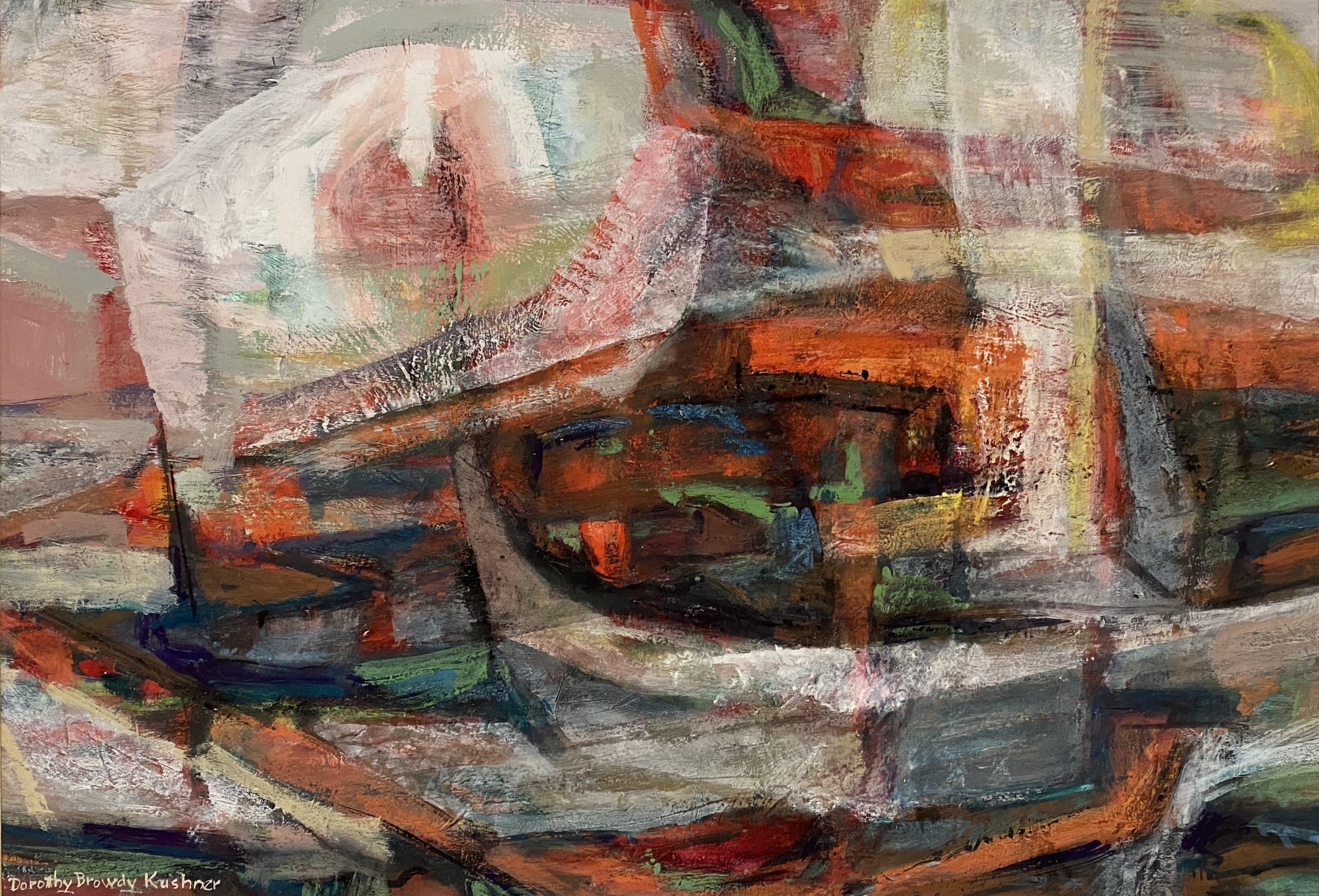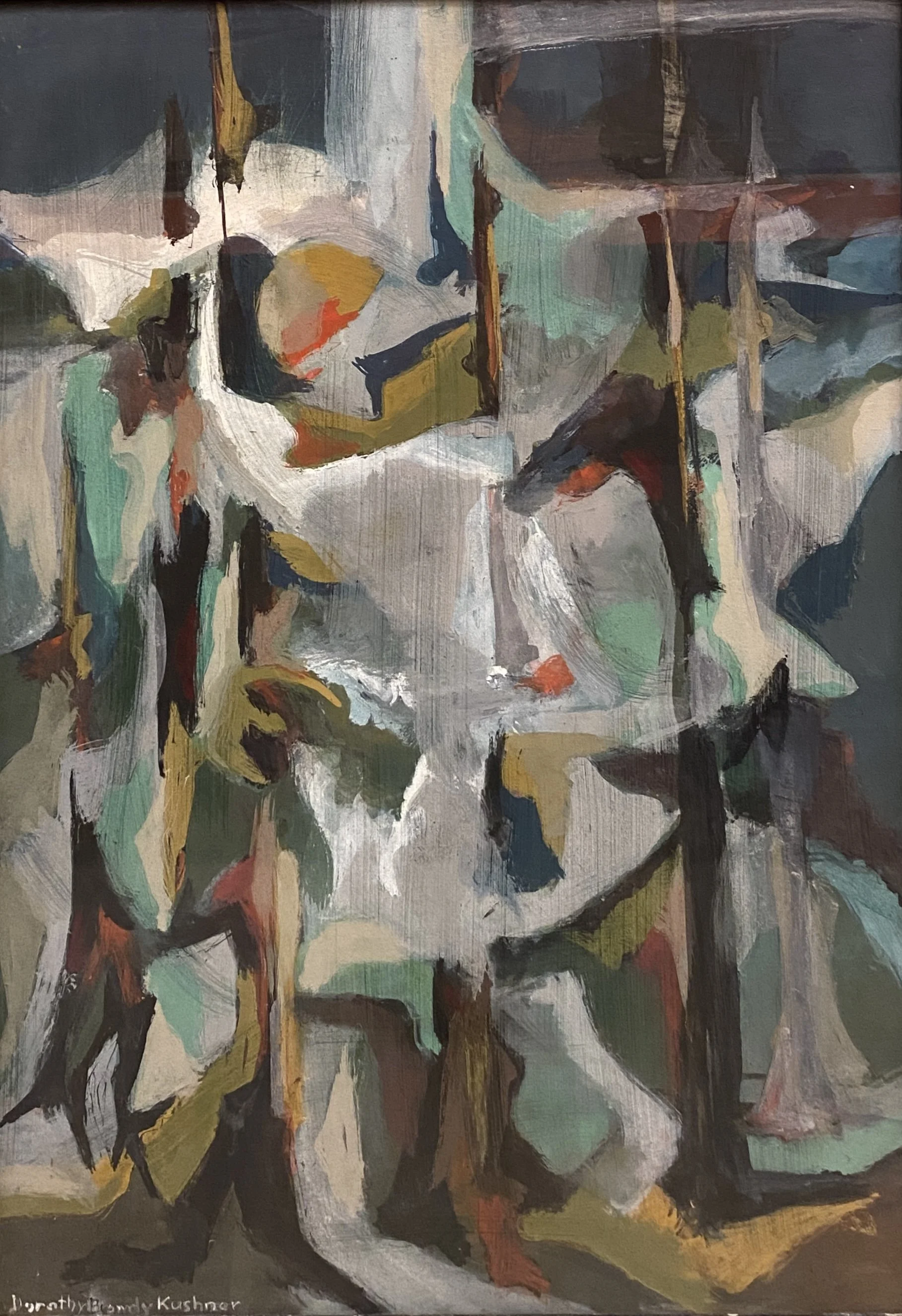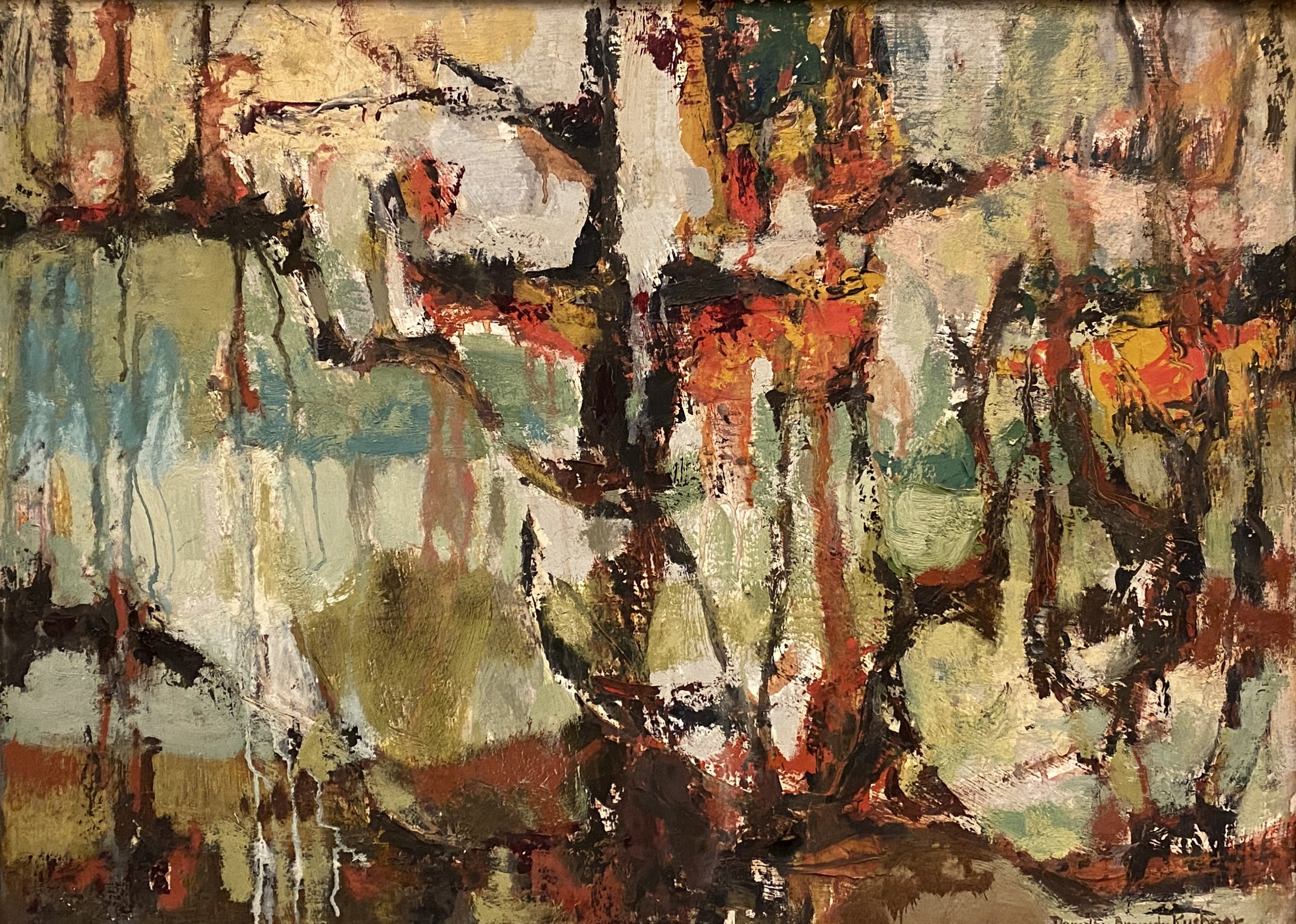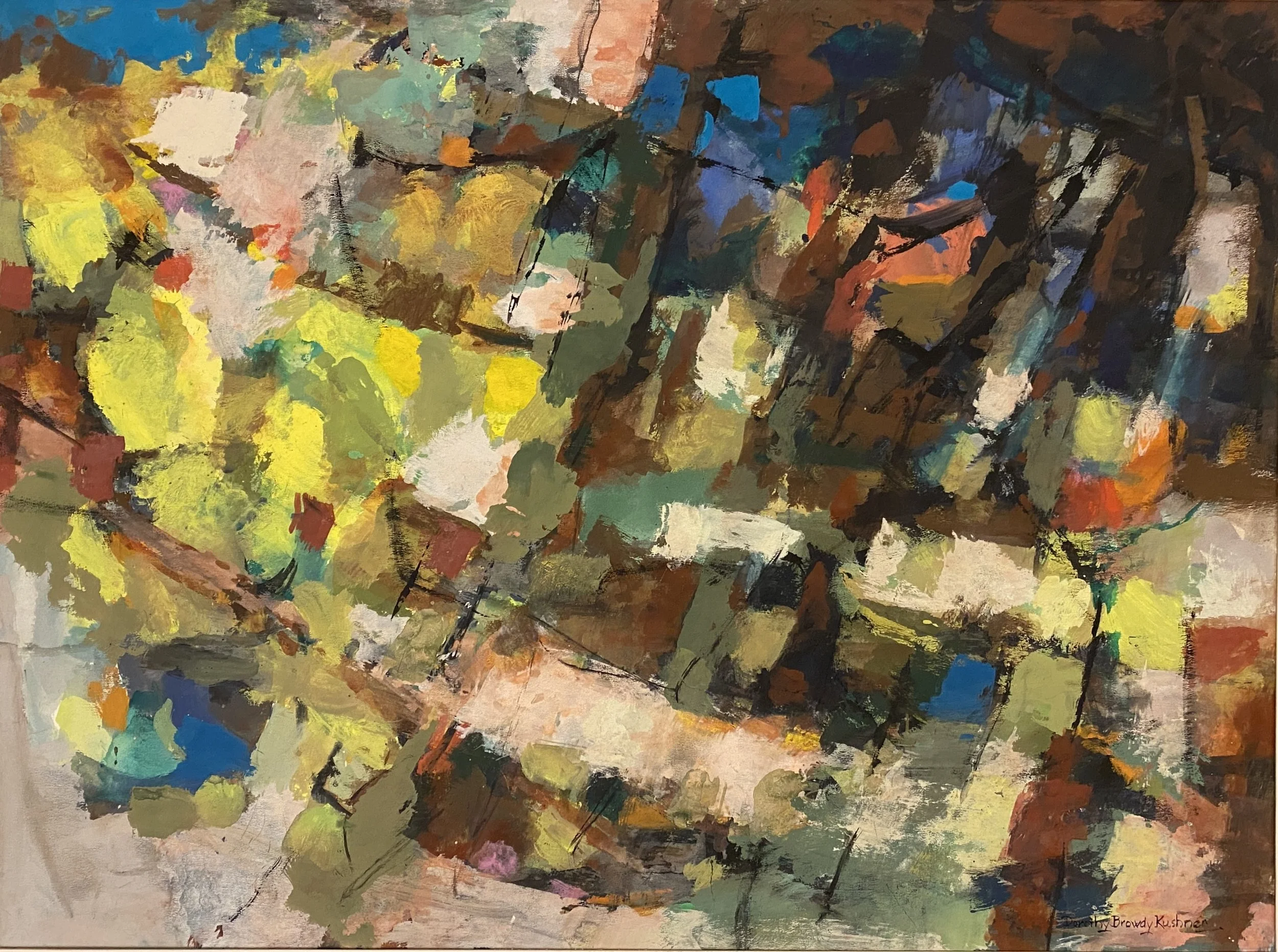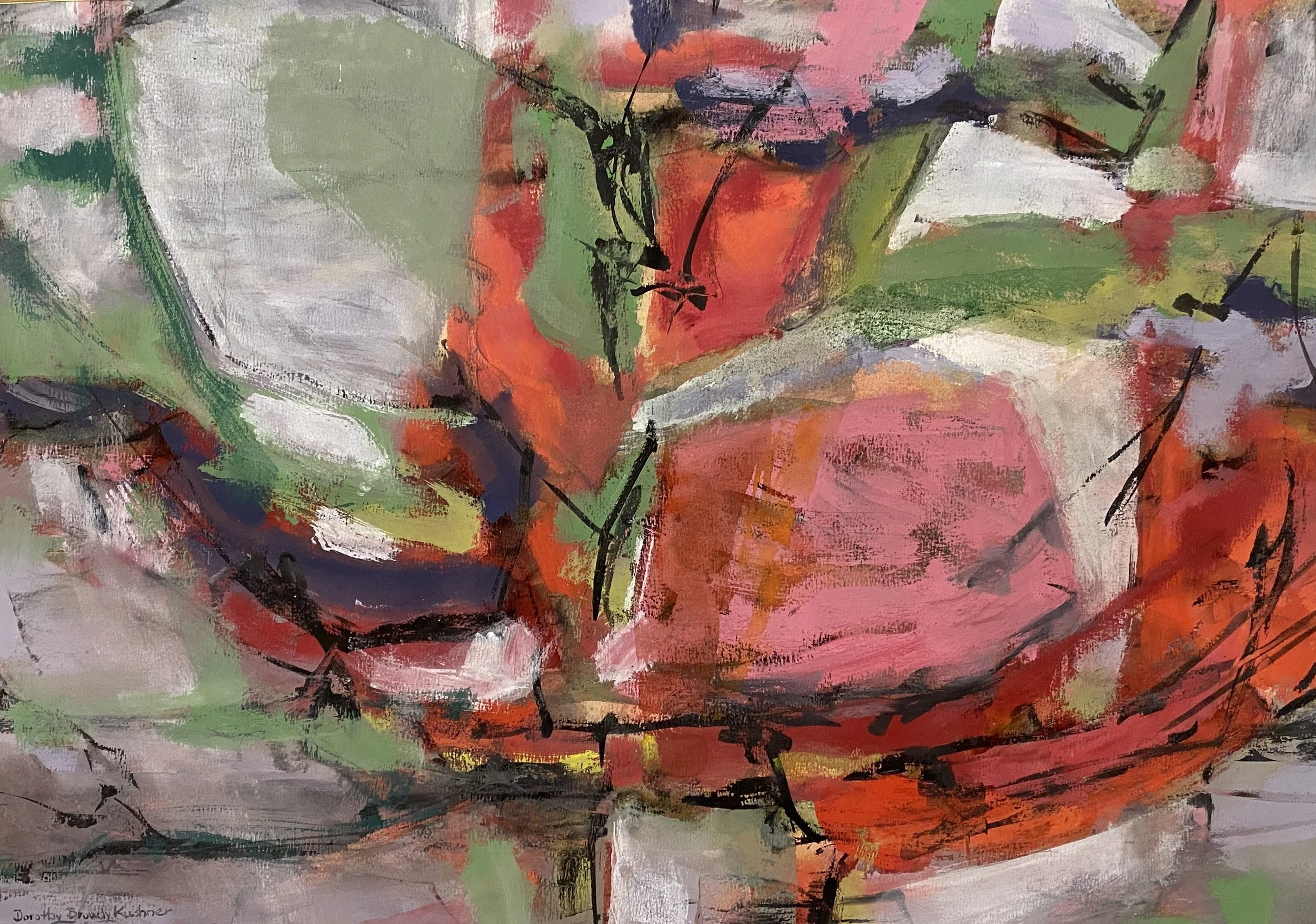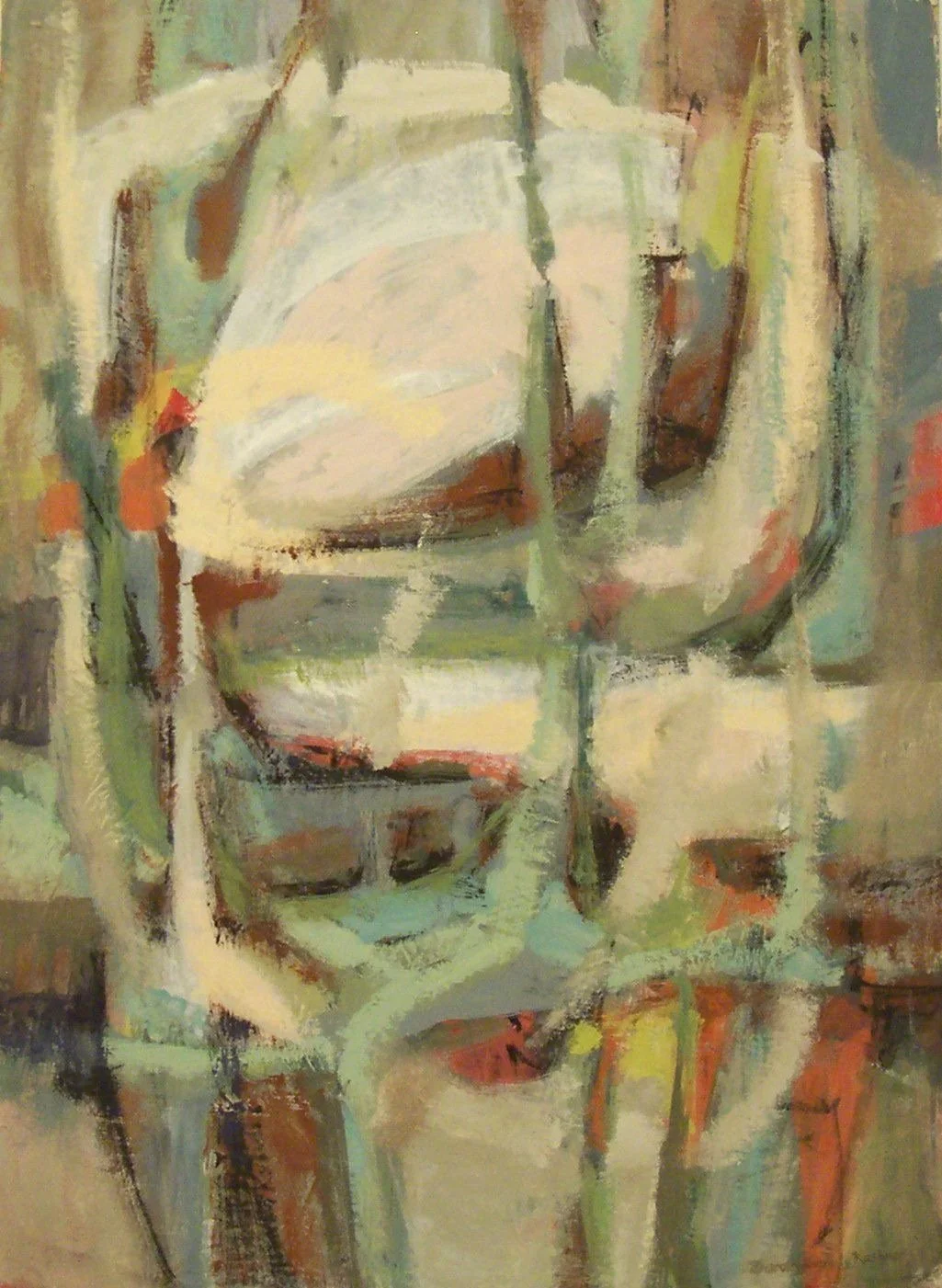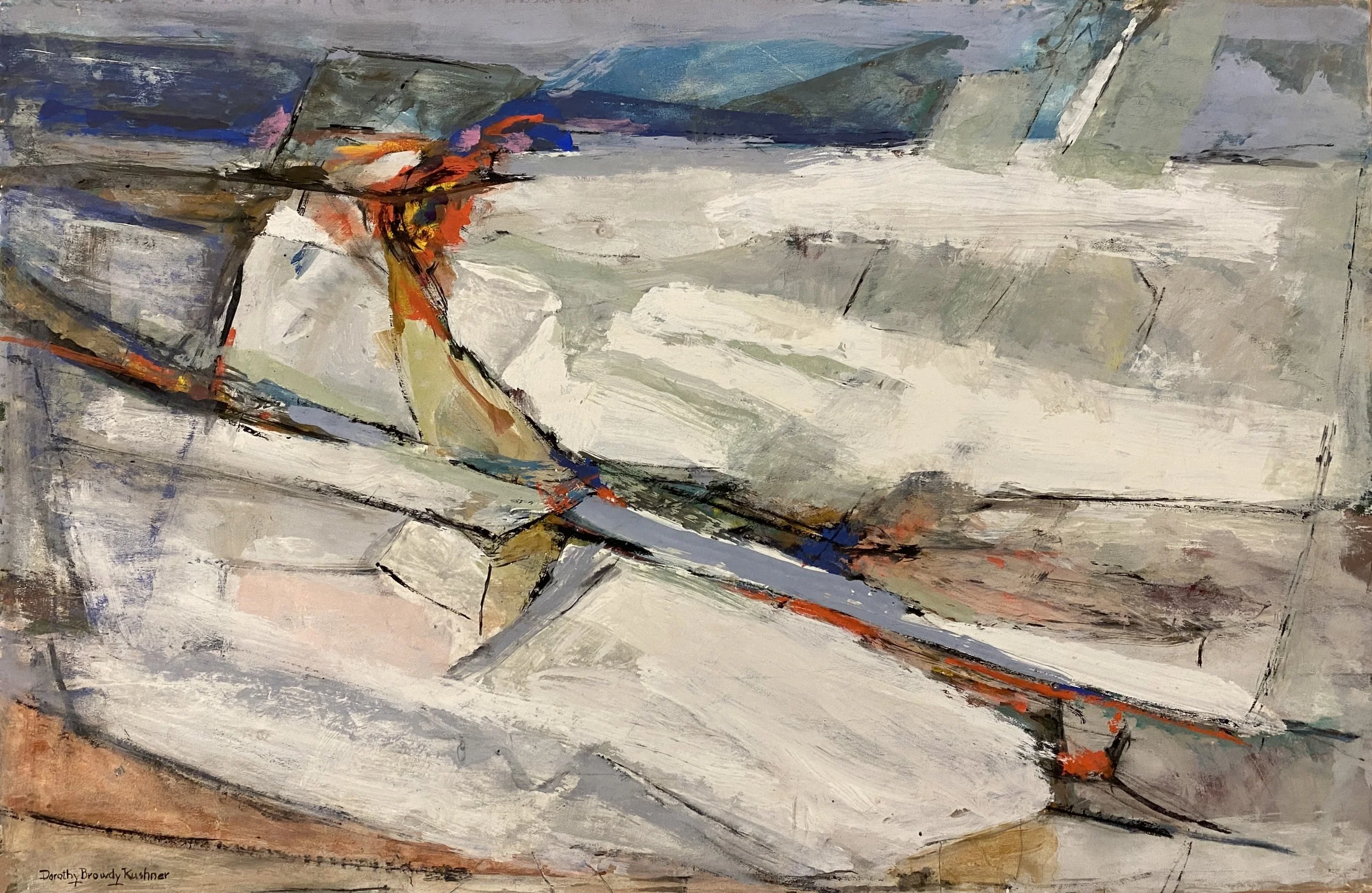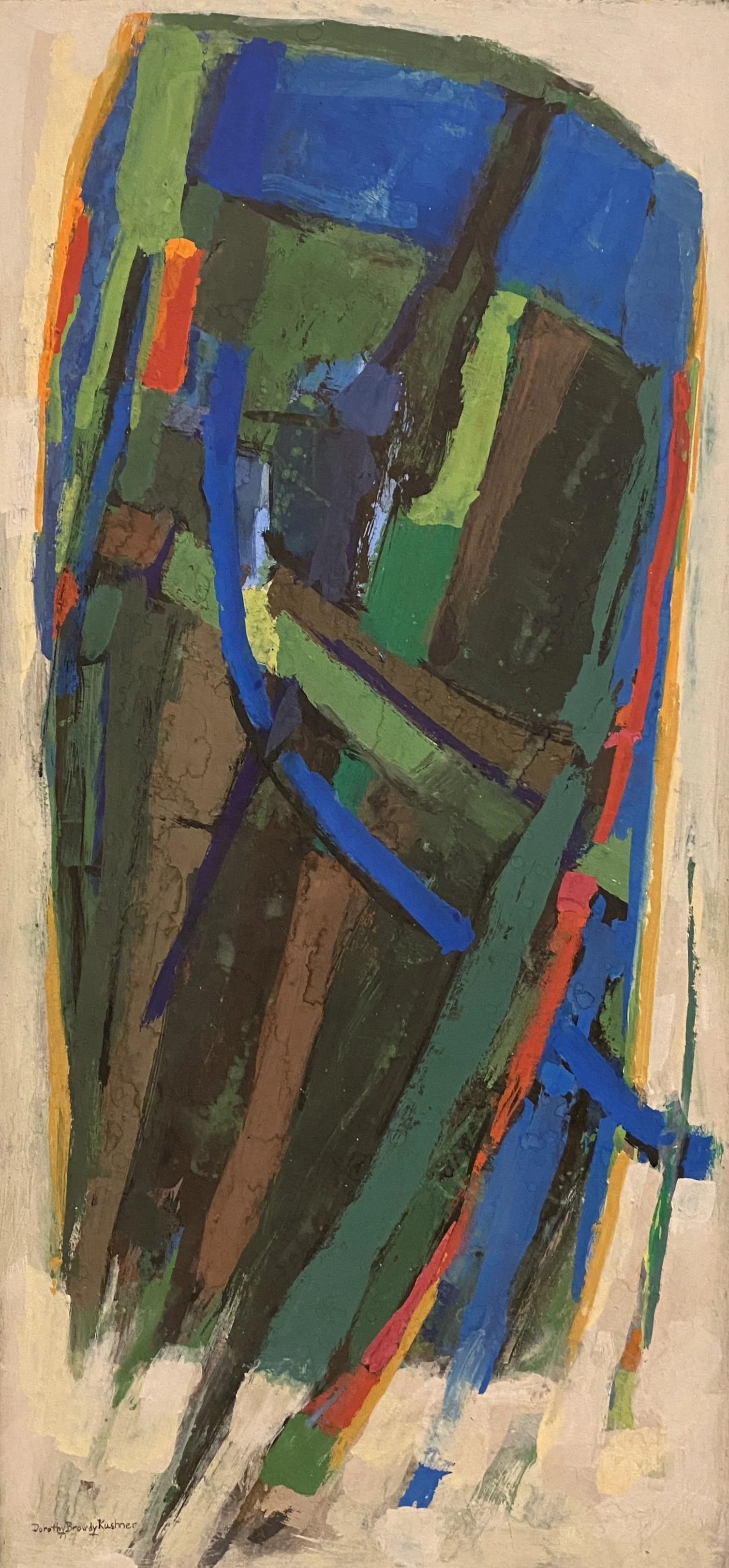
Rocks & Abstraction
In the mid 1950s Kushner admired the monumental paintings of Richards Ruben that she encountered at the Los Angeles County Museum of Art. They were large and authoritative, painted with bravado, strongly influenced by Clyfford Still and the other Bay Area Abstract Expressionists. She was also inspired by the virtuoso brushwork of Franz Kline—particularly his late, color work. She also became drawn to the work of Pierre Bonnard and would often take a reproduction of a Bonnard painting, isolate a small corner of it as the beginning of a new painting both for his rich color harmonies and the cropped composition.
Hans Hofmann’s theories of paint handling, composition and color were dominant in Dorothy’s mind during the 1950s and 1960s. “I wanted something different from the stuff I was doing, and so I took the class and [Ruben] was teaching … we met at the park, and that’s where I met all the Arcadia people that I knew that were in art [i.e. The Group]. I think he was quite influential in my life, changed my whole style from realistic [to abstraction].” -Kushner
After studying with Richards Ruben Dorothy’s work changed dramatically. Her landscapes became more abstract, focusing on close up views of rock formations that she derived from newspaper and magazine photos. Her palette cooled to browns, greens, black and gray with vibrant colors applied conservatively for a staccato effect. Her “Rocks” series was also influenced by the impasto application, painterly brushwork, vaguely quadrilateral forms, and compositionally clustered shapes of Nicolas de Staël, whom she admired. Her brushwork and compositions in “Rocks” were decisive and uncompromising.
Holiday, 22 x 32", acrylic on board, 1956
Moon Over the Pines, 27.5 x 19.25", watercolor on board 1955
Autumn in the Hills, 21.5 x 29.5", oil on masonite, 1953 -1954
Out of Doors, 25.75 x 35", acrylic on paper, 1963
Red Flowers, 24.25 x 34, acrylic on paper, 1962
Lily Forms, 30 x 11", casein on board, early 60s
Purple Flowers I & II, 48 x 24" each, diptych oil on masonite, 1962
Verdure, oil on canvas, 1963
Lunar Manifestations, 29.5 x 21", casein on board, early 1950s
The Harbor, 24 x 36", casein on board, 1956
Prelude, 47.75 x 23.125”, oil on masonite, 1963
Firien Woods 40 x 30" tissue paper collage and acrylic on board 1963
Buoyant Force, 27 x 37", casein on board, mid 1950s
Winds and the Rains, oil on masonite, 1954
White Lilies, 40 x 30", acrylic on board, 1960s
Plant World, 20 x 25.5", casein and ink, 1953
Rocas, 30 x 40", casein on board, 1958
Abstract, 42 x 20", casein on board 1962 - 1963
Megalith, 29 x 40", casein on board, 1963
White Landscape, 26 x 40", casein and ink on paper, 1960
Oncoming Storm, 30 x 40", oil on masonite, 1963
Red Landscape, 21 x 23", oil on masonite, 1963
Landscape, 28 x 38", casein on board, late 1950s
Abstract, 42 x 20", casein on board, 1962 - 1963
Glissade, 30 x 40", casein on board, early 1960's
Reflections, 20x35", casein on board, 1955
Precipice, 36 x 24", casein on board, 1955
Rocks on Rocks, 40 x 26", casein on board, 1956
